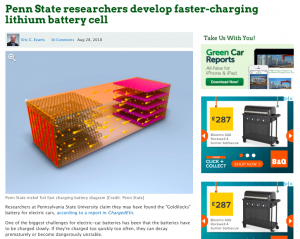Bill gates annual letter for 2021 pinpoints all breakthroughs in vaccinations in 2020 to fight with covid-19, and how the poorest areas in the world are still more vulnerable to the next pandemic. One of the key breakthroughs in the future must be saving the poorest areas from energy poverty. Read this interesting annual letter here.
Author: kamyarmehran
The Race to Build the World’s First Hyperloop
The first hyperloop may come to existence lost sooner that we expect. Hyperloop One, the Virgin’s project, planned to be operational in 2020!
Why Electrified Transportation Needs Microgrids
Government officials in Montgomery County, Maryland don’t have to speculate about the importance of energy resilience. In 2012 a derecho hit the mid-Atlantic, leading to the deaths of 13 people. The derecho also caused extended power outages for more than 250,000 residents, and this combined with the extremely hot temperatures led to an additional 29 deaths.
In the aftermath of the storm, Montgomery County launched an aggressive effort to improve resilience at its expansive government facilities. Part of the wide-ranging solution the county ultimately settled on and completed last year was to combine electric vehicle (EV) charging with the construction of two microgrids at critical government buildings.
US funding body ARPA-E funds research on energy storage lasting for days
New program funnels $28 million to flow batteries, thermal and chemical energy storage, and other long-duration technologies.
Long-duration energy storage — batteries or other technologies that can store energy for at least four hours of continuous operation, or possibly even longer — accounts for a minority of the grid-scale energy storage deployed today.
There are many reasons for this, including the cheapness and relative reliability of lithium-ion batteries for short-duration applications. As well as the, shall we say, less than stellar record of long-duration battery startups that have gone bankrupt or failed to deliver on their promises. Read more.
Stacking concrete blocks for storing energy in the grid
Wind and solar are the intermittent source of energy and we need to store the energy for days to provide continuous and stable source of energy. Bill Gross and Andrea Pedretti propose a good solution for this problem. Please read this article.
The universe acts like a massive induction machine
A team of investigators in NASA studying the Jovian aurora have made the “shocking” discovery of a seemingly inexplicable electron acceleration process that appears to cause Jupiter’s brightest auroras. Professor Donald Scott discusses the great significance of this discovery from the Electric Universe perspective in this interesting video:
Cyber Situational Awareness may be the solution for IoT security
This interesting webinar by experts in Carnegie Mellon University shows how situational awareness (SA) approach becomes important in the network operation and guaranteeing the security of wireless sensor network. I believe the SA is becoming one of the enabling technology for the future IoT and smart grids.
ARPA-E will do the same for energy innovation that DARPA did for interenet
Bill Gates wrote:
ARPA-E might be my favorite obscure government agency. In fact, it’s one of the reasons I felt confident about being part of a $1 billion investment fund last year.
The fund, Breakthrough Energy Ventures, builds companies that will deliver affordable, reliable clean energy around the world. Ultimately, we want to help people escape poverty, promote energy independence, reduce pollution, and avoid the worst effects of climate change. The idea is to invest the private capital that helps entrepreneurs take promising zero-emissions energy technologies out of the lab and into the market. Read more
